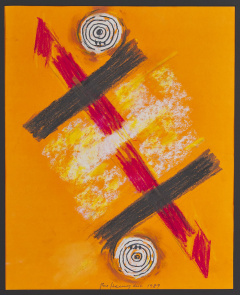Art Investment
Shtenglin Johann
1715–after 1779
Pseudonyms,autonyms and aliases: Ivan
БИОГРАФИЯ
SHTENGLIN Johann (Ivan)
engraver mezzotint.
Shtenglin was born in the largest center of engraving and printing - Augsburg, studied at the IG Bodenera some time to attend classes of the Imperial Academy of Arts. In 1741 the engraver was invited by J. Staehelin the Russian service - in the art department of the Academy of Sciences, and in 1742 arrived in St. Petersburg. This greatly contributed to compatriot engraver, painter and draftsman IE Grimmel, who brought samples of his work in Russia. On arrival in St. Petersburg Shtenglinu was immediately charged with a heavy workload, including instruction in mezzotint of two disciples - Johann Sebastian Tannauera (son of the famous painter Peter's time) and Ilya Rukomoykina.
with them Shtenglin made a series of portraits of Russian rulers, who, with additions and changes, is known in six editions. The first edition refers to 1742-1745, it consisted of twelve sheets, and included portraits of John IV, Fyodor Ivanovich, Boris Godunov, Basil Shuisky, Mikhail Fedorovich, Alexei Mikhailovich, Tsar Feodor Alekseevich, Ivan Alekseevich, Peter I, Catherine I, the Grand Duchess Anna Petrovna and Peter II. Second edition - one of those de twelve portraits, but the board peretushevany. In the third edition, dating to the middle 1740's, added a portrait of Anna Ioannovna; in the fourth (mid 1760-x) - portraits of Fyodor Romanov (Patriarch Filaret), Xenia Ivanovna Romanova, and the princess Sophia Alekseevny. The fifth edition, released in 1768, includes, in addition to the above-mentioned portraits, images Elizabeth; sixth (late 1760-x) - a portrait of Natalya Kirillovna Naryshkina. Cycle repeatedly replicated, resulting in later prints are extremely poor quality. Proofs of some boards with printed loop and in the XIX century, and a number of boards were schischeny in 1798. This makes it particularly important matter of time making prints, as the technique itself mezzotint Imagined impressive runs and, consequently, multiple replication (qualitative circulation mezzotint rarely exceeded one hundred copies).
quality impression is extremely important in relation to other works Shtenglina 1740-ies: two portraits of Elizabeth for the originals L. Caravaque, paired portraits of Peter Fedorovich and Catherine Alekseevny on originals GH Groth, portrait of the life-medic IG Lestocq original by Hans Grotto. Features mezzotint engravings in this period often retreated to the tasks of propaganda and popularization, which were placed in the publication of such works, especially the imperial portraits. Thus, the portrait of Grand Duke Peter Fedorovich, was released in an edition of 1 300 copies, and the Grand Duchess Catherine Alekseevny - in 1 000 impressions, because of which even prints 1740-ies often are made with already erased or ponovlennyh boards. However, despite the various editions and the quality of prints, these works represent the highest collecting interest, as representational portraits Shtenglina middle of XVIII century, belong to the most interesting monuments of his era.
In 1745 because of dissatisfaction with the work of his master was obliged to leave the Academy of Sciences, but he continued to engrave on its orders for piece-rate basis. In 1750 Shtenglin moved to Moscow. German artist worked in a factory merchant Mikhail Artemyev, specializing in the manufacture of inexpensive prints with religious content - images of saints and compositions on biblical subjects. Most of the sheets, printed on the factory did not have a copyright signatures and labeled only publishing marks: "Do MoE. to Fabre. MA "Or" cut at the factory. A. Ar. However, the Augsburg engraver was involved in almost all her works. Since 1757 Shtenglin worked at Moscow University, and in early 1760-s he returned to the St. Petersburg Academy of Sciences. In it, he took up teaching style of two black students - Vasily Sokolov and Yemelyan Fedoseeva. Along with teaching work continued to be actively engaged in engraving, running in 1760-s about twenty works (their circulation is considerably less than the engravings 1740-ies). Following the trend of the times, the engraver turned to the chamber portraits. In 1768-1779 served in the Imperial Academy of Arts.
Shtenglina works are in collections of many Russian museums: the Pushkin Museum in them. Pushkin State Museum of History, State Russian Museum, State Hermitage Museum, the Scientific Research Museum of Russia Academy of Arts and others.
Новости - Auctions
Торги «Антиквариума» 28 июля. Краткие итоги
03.08.2018Очередной аукцион #всёпорублю в «Литфонде» принес почти 4,5 млн.руб.
25.07.2018«Русская Эмаль» торжественно закрывает сезон и уходит в отпуск
24.07.2018Краткие итоги сороковых живописных торгов «Кабинета»
16.07.2018Коротко о главном: итоги аукциона 28 июня в «Литфонде»
03.07.2018Торги 27 июня в «Литфонде» для самых терпеливых и настойчивых
03.07.2018
Услуги ARTinvestment
Арт-консалтинг
Индивидуальные консультации от опытных искусствоведов по любым вопросам в сфере искусства
Составление Инвестиционного Портфеля
Подбор предметов искусства для инвестирования под любую инвестиционную стратегию
Индивидуальная оценка
Наши эксперты проведут профессиональную оценку вашего предмета искусства, учитывая его состояние, авторство, историю и другие факторы
Проведенных аукционов
Зарегистрированных пользователей на аукционе
Записей в базе
Художников в базе
Auction sale in AI Auction

БУРЛЮК Давид Давидович (1882–1967) Катание в санях. 1966 (20 × 25 см)
сделать ставку
ЯКОВЛЕВ Владимир Игоревич (1934–1998) Одинокий розовый цветок. 1983 (54,6 × 42,4 см)
сделать ставку
НЕМУХИН Владимир Николаевич (1925–2016) Композиция на оранжевом. Из цикла «Супрематизм». 1989 (43,3 × 35,3 см)
сделать ставку